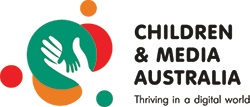Editorial: Goodbye to C and P programs on commercial TV? February 3, 2021

The first day of the New Year saw the commencement of the new Australian and Children’s content standards for commercial free-to-air TV in Australia.
It seems unlikely that these will support the continued production and screening of quality age-appropriate programs for primary school aged children on commercial TV.
The previous standards for children’s C classified content were implemented over 40 years ago to ensure that Australian children aged 6-13 had access to such programs on Australian TV.
Commercial TV at the time was assessed as not having sufficient interest (financial or otherwise) in providing such access for a neglected audience.
ACCM played a key role in convincing the government of the day to act to remedy that.
ACCM also fought many a battle, and over many years, to ensure the standards were improved and updated, and to fend off repeated attempts by the networks to remove these legal requirements.
The networks’ interest in and devotion of resources to the production and provision of quality C (and later, P for preschool) programs throughout all these years rarely rose above the required minimum. This despite, for example, the world acclaim that independently produced Australian children’s dramas had received.
These too were given too little promotion. However, C and P programs were being made and screened and added to the diversity of program types available.
During 2020, the federal government held yet more reviews of the children’s standards, and in addition, due to Covid19’s impacts, suspended the children’s quota requirements.
In December, the government directed the ACMA to implement a new set of standards that removed the children’s C and P program quota obligations. Commercial networks are now free to fill their Australian content quotas any way they like- which can be all programs for grownups. It’s difficult to see how quality children’s programs will survive now.
The lifting of quotas for children’s programs is not the only change to the standards: C programs were intended “for those of primary school age”, while including a definition of a child as “under the age of 14”.
C programs are now “for children”, with the government directing that a child will be “under the age of 15 years”.
Will anyone choose to make programs for middle childhood, when they can opt for the more lucrative tween and teen market?
If any C programs are made, industry classifiers (previously the ACMA classifiers) will judge quality and age-appropriateness. . Where’s impartiality in that?
Some will argue children can always watch the ABC, but if the only quality free-to-air programs for children are screened on just one or two channels, where’s the diversity of choice for children of different ages and interests who might all be watching at the same time?
Adults have a multitude of choice on free-to air, supplemented (if families can afford it) by streaming services.
And more: where’s the support and market for independent children’s producers in Australia going to come from.?
Much has been lost.
CMA thanks the Romeo family for its support

About CMA
Children and Media Australia (CMA) is a registered business name of the Australian Council on Children and the Media (ACCM).
CMA provides reviews, research and advocacy to help children thrive in a digital world.
ACCM is national, not-for-profit and reliant on community support. You can help.
ABN: 16 005 214 531
- Home
- Site Map
- Disclaimer
- © Children and Media Australia 2012 - 2025


